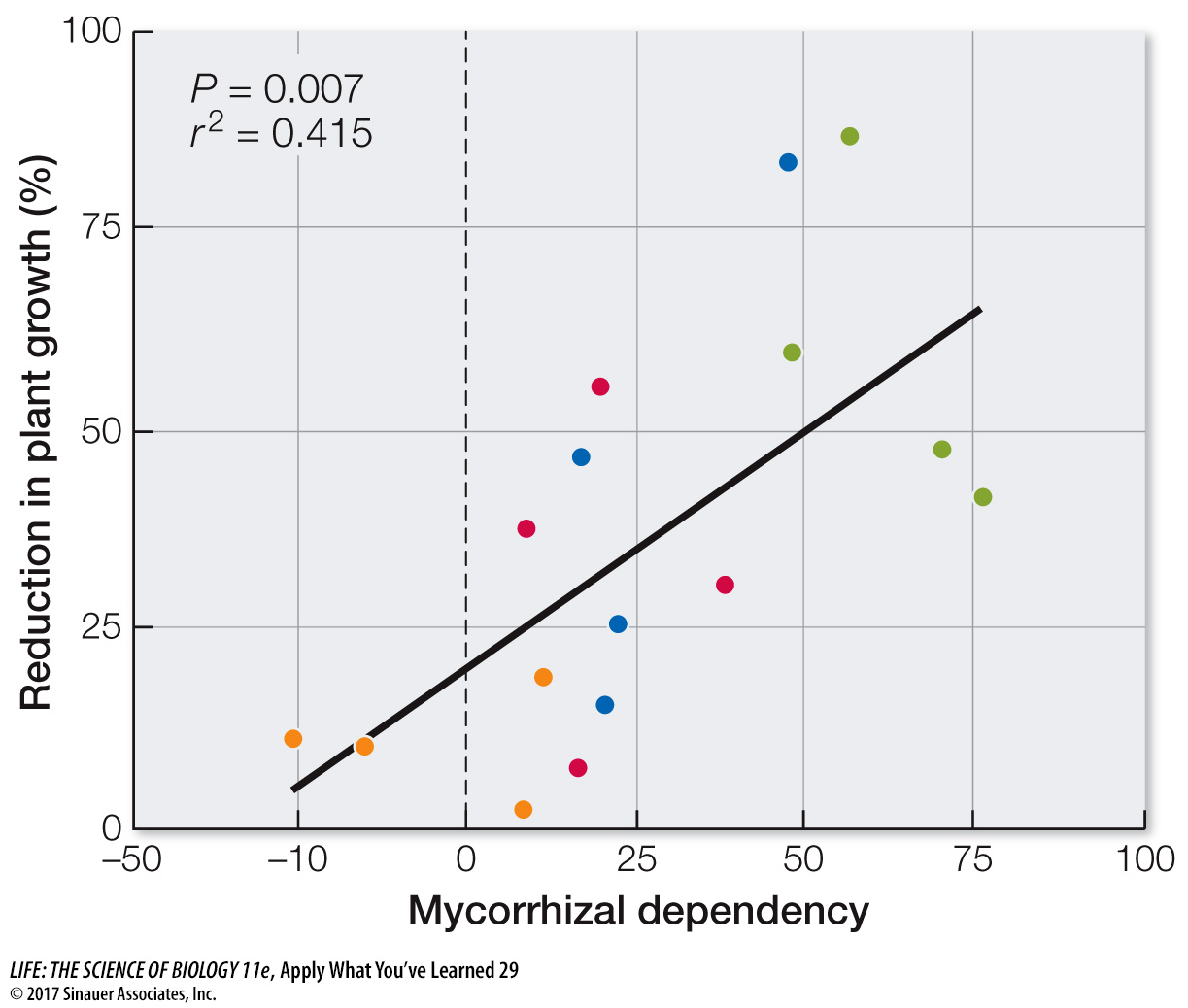Apply What You’ve Learned
Review
29.2 Mycorrhizae are mutualistic associations between fungi and the roots of vascular plants.
Original Paper: Stinson, K. A. et al. 2006. Invasive plant suppresses the growth of native tree seedlings by disrupting belowground mutualisms. PLoS Biology 4: e140.
Garlic mustard (Alliaria petiolata) is a highly invasive plant of Eurasian origin that causes much damage to native plants where it invades in North America. The manner by which this plant outcompetes native plants is unusual: it secretes chemicals that interfere with the mutualistic relationships the native plants have with arbuscular mycorrhizal fungi.
Some plants are more dependent than others on arbuscular mycorrhizal fungi. Researchers examined the effect of exposure to garlic mustard on several plant species and measured the effect that removal of arbuscular mycorrhizal fungi had on each plant. The figure below shows the results of the study. Yellow points, herbaceous colonizers of disturbed forest edges; red points, herbaceous species that live in forest edges and in the gaps between patches of forest; blue points, woody colonizers of forest edges and gaps between patches of forest; green points, tree species of mature forests.
634
Questions

Question 1
What is the relationship between the effect of exposure to garlic mustard on a plant species and its dependence on arbuscular mycorrhizal fungi? Is this relationship consistent with garlic mustard reducing plant growth by interfering with the plant's fungal mutualists?
There is a strong linear relationship between the negative effects of exposure to garlic mustard on a species and its dependence on its fungal mutualists, as the plants that are most dependent on the mutualism are most negatively affected by exposure to garlic mustard. This is consistent with garlic mustard reducing growth by interfering with the mycorrhizal mutualists.
Question 2
Which types of plants are most dependent on their mycorrhizal mutualists? Explain your answer. What other observations can be made about habitat and reliance on fungal mutualists?
Trees from mature forests are most dependent on arbuscular mycorrhizal fungi. A reasonable explanation for this finding is that trees in mature forests rely heavily on drawing nutrients and water from their roots, the site of action for arbuscular mycorrhizal fungi. Plants that live on forest edges and particularly those that live in disturbed areas are less reliant on the mutualists than are those that live in mature forests. This may be due to edge species being less reliant on gathering water and nutrients via their roots.
Question 3
Climate change is expected to lead to greater extremes in temperature and precipitation. What are the likely implications for plants with arbuscular mycorrhizal fungi as climate change becomes more pronounced? Would these aspects of climate change likely increase or decrease the negative effects of exposure to garlic mustard?
Plants with active arbuscular mycorrhizal fungal mutualists are more resilient to drought and temperature extremes than those without. Thus the loss of the fungal mutualists by exposure to garlic mustard may lead to the plants being less resilient to drought and temperature extremes.
The plants with arbuscular mycorrhizal fungi should be able to withstand extremes in climate better than those without. Loss of fungal mutualists via the action of garlic mustard should lead to greater negative consequences for the plants as a result of climate change.